In a world where culinary experiences are continually evolving, the contact grill has emerged as a game-changer in the realm of outdoor cooking. This innovative appliance combines the convenience of a traditional grill with the precision of a contact searing technique, allowing chefs and enthusiasts alike to achieve restaurant-quality results in their own backyards. With the rise of Original Design Manufacturer (ODM) partnerships, the future of contact grills looks brighter than ever, promising a plethora of customized options and cutting-edge technologies. Let’s delve into the success stories that have shaped this industry and explore the exciting possibilities that lie ahead.
Introduction to Contact Grills
Contact grills have become a popular kitchen appliance, offering a unique and efficient way to cook a variety of foods. These compact cooktops are designed to sear, brown, and lock in flavors, making them a favorite among barbecue enthusiasts and busy home cooks alike. Here’s a closer look at what contact grills are, how they work, and why they’re a game-changer in the world of cooking.
The contact grill, often referred to as a countertop grill or a flat-top grill, is a versatile appliance that combines the functionality of a grill with the convenience of a stovetop. Unlike traditional grills that cook food by direct heat from above and below, contact grills utilize a flat cooking surface that comes into direct contact with the food. This direct contact allows for even heat distribution and a perfectly sealed-in flavor.
One of the standout features of contact grills is their ability to achieve a professional-grade sear. The even heat distribution ensures that meats, vegetables, and even pancakes get that perfect char and crust. Whether you’re grilling steaks, burgers, or fish, the contact grill delivers consistent results that are hard to replicate on a traditional grill.
Another advantage of contact grills is their ease of use. These appliances are typically compact and can be easily stored away when not in use. They don’t require the preparation of a grill or the cleanup afterward, making them a great choice for those who love the taste of grilled food but lack the outdoor space or time to use a traditional grill.
The cooking surface of a contact grill is usually made of cast iron or stainless steel, which not only provides durability but also offers excellent heat retention. Many models come with adjustable temperature controls, allowing you to cook at the perfect heat for different types of food. Some even feature non-stick coatings to make cleaning a breeze.
One of the most innovative aspects of contact grills is their ability to cook food in a variety of ways. You can grill, sear, sauté, and even bake on a contact grill. This versatility means you can prepare a wide range of dishes, from breakfast items like pancakes and eggs to dinner entrees like steaks and vegetables. The surface can also be used for cooking sandwiches, stir-fries, and even desserts.
For those looking to add a touch of gourmet flair to their cooking, contact grills offer a variety of attachments and accessories. These can include press plates for perfecting burgers and sandwiches, grill grids for grilling vegetables and seafood, and even waffle plates for making homemade waffles.
When it comes to cleaning, contact grills are a breeze. The flat surface is easy to wipe down, and most models have a non-stick coating that prevents food from sticking. Some models even come with a drip pan or grease tray to catch any excess fat or juices, making cleanup even more efficient.
Another benefit of contact grills is their versatility in terms of fuel source. While some models use electricity, there are also gas-powered contact grills available, offering the convenience of a gas grill with the compact size of an electric one.
In terms of design, contact grills come in a variety of shapes and sizes. Some are sleek and modern, designed to fit seamlessly into any kitchen decor, while others are more traditional, with a classic look that complements rustic or country-style kitchens.
From outdoor enthusiasts to indoor chefs, contact grills have something to offer everyone. They are perfect for those who want to enjoy the flavor of grilled food without the hassle of setting up a grill or dealing with smoke and ash. Whether you’re hosting a small gathering or simply want to enjoy a delicious meal at home, a contact grill can be a valuable addition to your kitchen arsenal.
In summary, contact grills are a versatile and efficient cooking appliance that can transform the way you prepare meals. With their ability to sear, brown, and lock in flavors, along with their ease of use and compact design, they are a must-have for any kitchen looking to enhance its culinary capabilities.
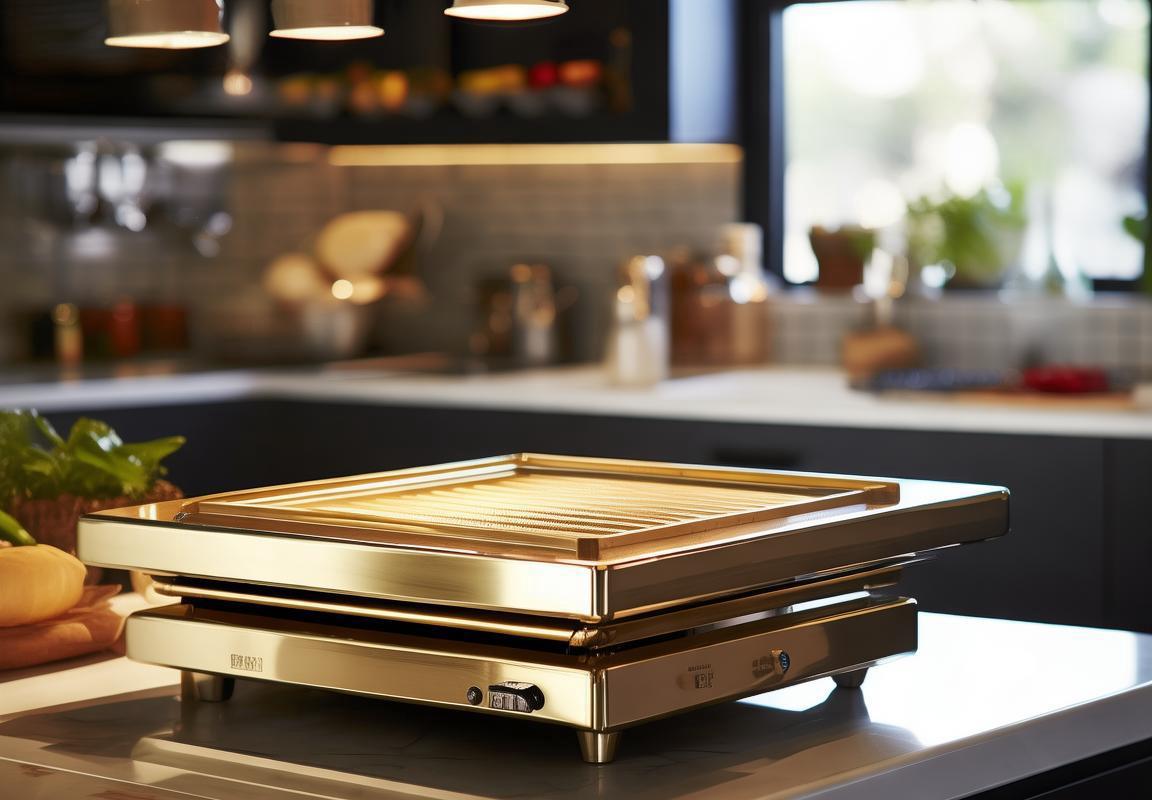
Understanding ODM and Its Role
ODM, or Original Design Manufacturing, is a term that plays a pivotal role in the global supply chain, particularly in the electronics and appliance industries. It involves a manufacturer creating products based on the specifications and designs provided by a client, rather than selling generic, off-the-shelf items. Understanding ODM requires delving into its core functions, the benefits it offers, and the challenges it presents.
In the context of ODM, the manufacturer assumes a more collaborative role, working closely with the client to bring their vision to life. This means that the manufacturer not only produces the product but also contributes to its design and development, ensuring that the final product aligns with the client’s brand identity and market requirements.
One of the key aspects of ODM is the level of customization it allows. Clients can provide detailed specifications, including materials, features, and branding elements, and the ODM partner will work to create a product that meets these exact requirements. This level of personalization is often not possible with standard manufacturing processes, making ODM a preferred choice for businesses looking to differentiate their products in a crowded market.
The design process in ODM is a collaborative endeavor that requires a deep understanding of both the client’s needs and the technical capabilities of the manufacturing process. This often involves iterative design work, where the manufacturer and client work together to refine the product until it is perfect. This back-and-forth can lead to innovative solutions that might not have been considered otherwise.
Another important aspect of ODM is the control it offers over the supply chain. By working directly with an ODM partner, clients can ensure that the entire production process is transparent and that quality standards are consistently met. This can be particularly beneficial for businesses that need to maintain a high level of quality control without the overhead of managing multiple suppliers.
The role of ODM extends beyond just product design and manufacturing. It also encompasses the management of intellectual property rights. When a client engages an ODM partner, they are often entering into a contract that includes clauses regarding the ownership of the design and any associated intellectual property. This is crucial for protecting the client’s investment and ensuring that the product cannot be replicated by competitors.
One of the significant benefits of ODM is the reduction in time-to-market. Since the manufacturer is already equipped with the necessary design and production capabilities, the client can bypass the time-consuming process of setting up a new manufacturing line or finding suitable suppliers. This can be a game-changer for businesses that need to launch new products quickly to capitalize on market opportunities.
Cost efficiency is another advantage of ODM. By leveraging the manufacturer’s existing infrastructure and expertise, clients can often achieve lower production costs than if they were to produce the product in-house or source components from various suppliers. This cost savings can be passed on to the end consumer, making the product more competitive in the market.
However, ODM is not without its challenges. One of the main concerns is the potential for intellectual property theft. Since the manufacturer is deeply involved in the design process, there is a risk that the client’s proprietary information could be misused. To mitigate this risk, it’s essential for clients to establish clear agreements and ensure that their intellectual property is adequately protected.
Additionally, the quality of the product can sometimes be compromised if the ODM partner does not fully understand the client’s brand or market requirements. It’s crucial for clients to maintain open lines of communication with their ODM partners to ensure that the final product meets their expectations.
The transition from traditional manufacturing to ODM also requires a shift in mindset. Clients must be willing to collaborate closely with their ODM partners and be open to feedback and suggestions during the design and production process. This level of collaboration can be challenging for businesses accustomed to a more hands-off approach to manufacturing.
In conclusion, ODM is a complex and multifaceted process that offers numerous benefits but also comes with its own set of challenges. Understanding its role involves recognizing the importance of customization, the management of intellectual property, the reduction in time-to-market, and the potential for cost savings. By navigating these complexities effectively, businesses can leverage ODM to gain a competitive edge in the marketplace.

The Benefits of a Contact Grill
A contact grill, often referred to as a flat-top grill or a countertop grill, has gained popularity for its convenience and effectiveness in cooking. Here are some of the key benefits that make it a favorite among home chefs and culinary enthusiasts alike:
-
Consistent Heat DistributionThe flat surface of a contact grill ensures even heat distribution, which is crucial for cooking meats, vegetables, and other food items to perfection. Unlike traditional grills that may have hot spots, the even cooking temperature prevents overcooking or undercooking, resulting in a more consistent and delicious final product.
-
Quick and Easy CookingOne of the standout features of a contact grill is its speed. The compact design and efficient heat transfer mean that food can be cooked much faster than on a traditional grill. This is especially beneficial for busy individuals or those looking to prepare a meal in a hurry without compromising on taste.
-
Minimal CleanupCooking on a contact grill is a cleaner experience. The non-stick surface and the fact that food is cooked directly on the grill plate make for easy release and cleanup. There’s no need for a grill brush or to worry about flare-ups, as the fat and juices are drained away during the cooking process, leaving less mess to clean up.
-
Versatile Cooking OptionsWhile contact grills are often associated with grilling, they offer a variety of cooking methods. You can sear steaks, grill vegetables, bake bread, and even make pancakes. The versatility of these appliances allows for a wide range of culinary possibilities without the need for multiple kitchen gadgets.
-
Healthier CookingContact grills are a healthier option compared to traditional grilling methods. The reduced fat content in the cooking process is due to the fact that the fats and oils are drained away during cooking. This can lead to lower calorie counts and healthier meals, making it a great choice for those watching their dietary intake.
-
No Flare-UpsFlare-ups are a common issue when grilling outdoors, but they are virtually non-existent with a contact grill. The controlled environment of the appliance means that the food is less likely to catch fire, providing a safer cooking experience for both the cook and those around.
-
Compact and PortableContact grills are designed to be compact, which makes them perfect for small kitchens or outdoor cooking. They can easily be stored in a cabinet or on a countertop, and some models are even portable, allowing you to take your grilling experience with you to a picnic or camping trip.
-
Enhanced FlavorDespite being a countertop appliance, contact grills can impart a smoky flavor to your food. Many models come with a smoking function that allows you to add a touch of smoke to your dishes, mimicking the taste of traditional outdoor grilling.
-
Easy to UseWith simple controls and a straightforward design, contact grills are user-friendly for people of all cooking skills levels. The intuitive features make it easy to achieve professional-quality results without a lot of effort or expertise.
-
Cost-EffectiveCompared to outdoor grills, contact grills are generally more affordable. They provide a cost-effective way to enjoy grilled flavors without the need for a large outdoor grill or the associated maintenance costs.
In summary, the benefits of a contact grill are numerous, from its quick and easy cooking to its health benefits and versatility. Whether you’re a seasoned grill master or a novice cook, a contact grill can be a valuable addition to any kitchen, offering convenience, efficiency, and delicious results.
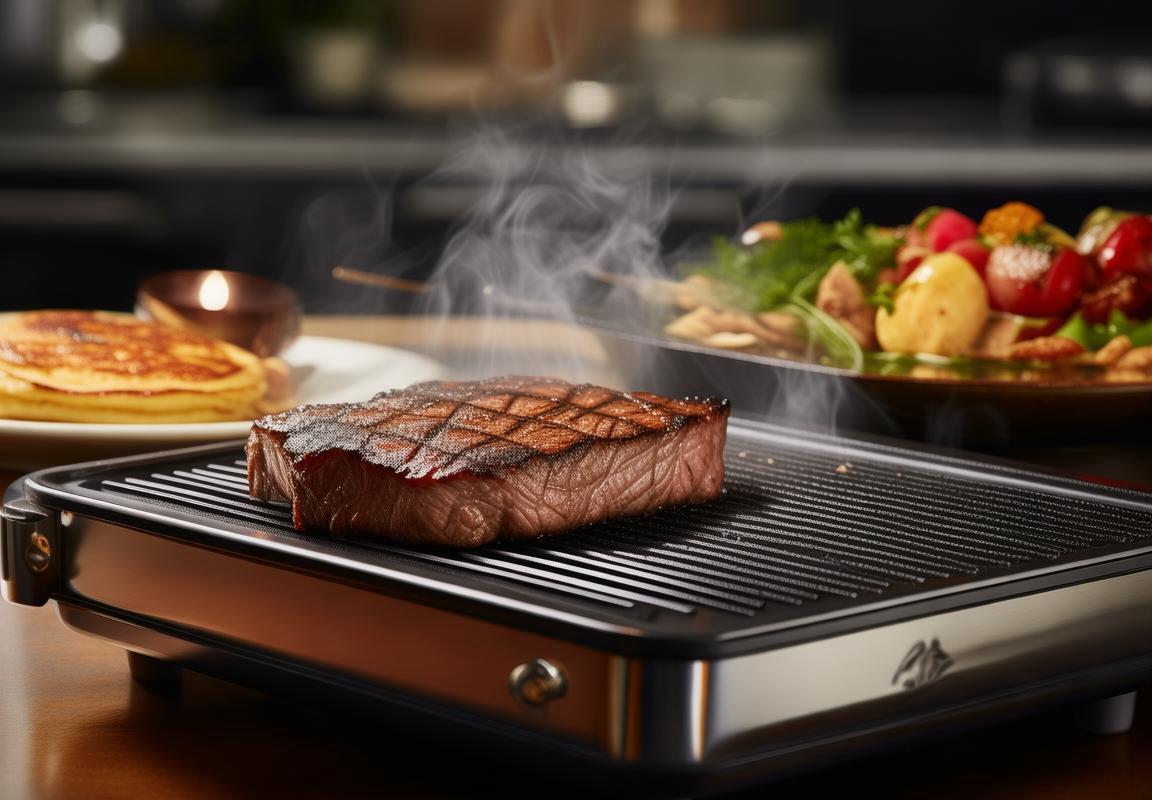
Exploring Contact Grill ODM Options
In the world of kitchen appliances, the contact grill has emerged as a versatile and efficient cooking tool. When it comes to sourcing these grills, Original Design Manufacturer (ODM) options offer a wealth of benefits. Here’s a closer look at the variety of ODM choices available and how they can cater to your specific needs.
When considering ODM options for contact grills, the first thing to note is the vast array of design choices. From sleek and modern to classic and rugged, ODM partners can tailor the design to match the aesthetic preferences of your target market. This customization can range from the color and finish of the grill’s exterior to the placement of features like temperature controls and cooking surfaces.
One of the key advantages of opting for an ODM contact grill is the ability to incorporate advanced technologies. These manufacturers often have a pulse on the latest trends in cooking technology, such as non-stick coatings, infrared heating elements, and adjustable heat settings. By choosing an ODM, you can ensure that your product is not only attractive but also technologically advanced, appealing to consumers looking for the latest in cooking appliances.
The quality of materials used in a contact grill is paramount to its performance and longevity. ODMs can provide insights into the best materials for construction, ensuring that your grill is durable and can withstand the rigors of daily use. From stainless steel to cast aluminum, the choice of materials can significantly impact the grill’s ability to maintain heat, resist rust, and distribute heat evenly.
Customization also extends to the size and capacity of the contact grill. ODMs can offer different sizes to cater to various market segments, from compact grills suitable for apartments to larger models ideal for outdoor cooking. This flexibility allows you to target different demographics and market niches with a variety of product offerings.
Safety features are a critical consideration in any kitchen appliance, and ODMs can integrate a range of safety innovations into contact grills. From automatic shut-off mechanisms to cool-touch handles, these features can give your product a competitive edge. ODM partners are also experienced in compliance with international safety standards, ensuring that your grill meets all necessary regulations.
Innovation in design isn’t just about aesthetics; it’s also about functionality. ODMs can develop contact grills with innovative features like removable cooking plates for easy cleaning or built-in temperature probes for precise cooking control. These additions can make your product stand out from the competition and appeal to consumers who value convenience and ease of use.
Another advantage of working with an ODM is the potential for branding integration. These manufacturers can help you design a contact grill that reflects your brand identity, from the logo placement to the overall product design. This branding consistency can strengthen your brand image and make your product more memorable in the eyes of consumers.
When it comes to distribution, ODMs can also assist with logistics. They may offer packaging solutions that protect your product during shipping and can even help with inventory management. This end-to-end service ensures that your contact grill is ready to hit the market with minimal hassle.
The cost-effectiveness of ODM options is another compelling reason to consider them. By leveraging the economies of scale that ODMs offer, you can reduce manufacturing costs without compromising on quality. This can be particularly beneficial for small businesses or startups looking to enter the market with a competitive pricing strategy.
Furthermore, ODMs often provide extensive after-sales support. This includes assistance with technical troubleshooting, customer service, and warranty claims. By outsourcing these support functions, you can focus on other aspects of your business, knowing that your customers are well taken care of.
In conclusion, the options available through Original Design Manufacturers for contact grills are diverse and offer a multitude of benefits. From design customization and technological advancements to quality materials and branding opportunities, ODMs can help bring your vision for a top-notch contact grill to life. By considering these options, you can ensure that your product stands out in a crowded market and meets the evolving demands of consumers.
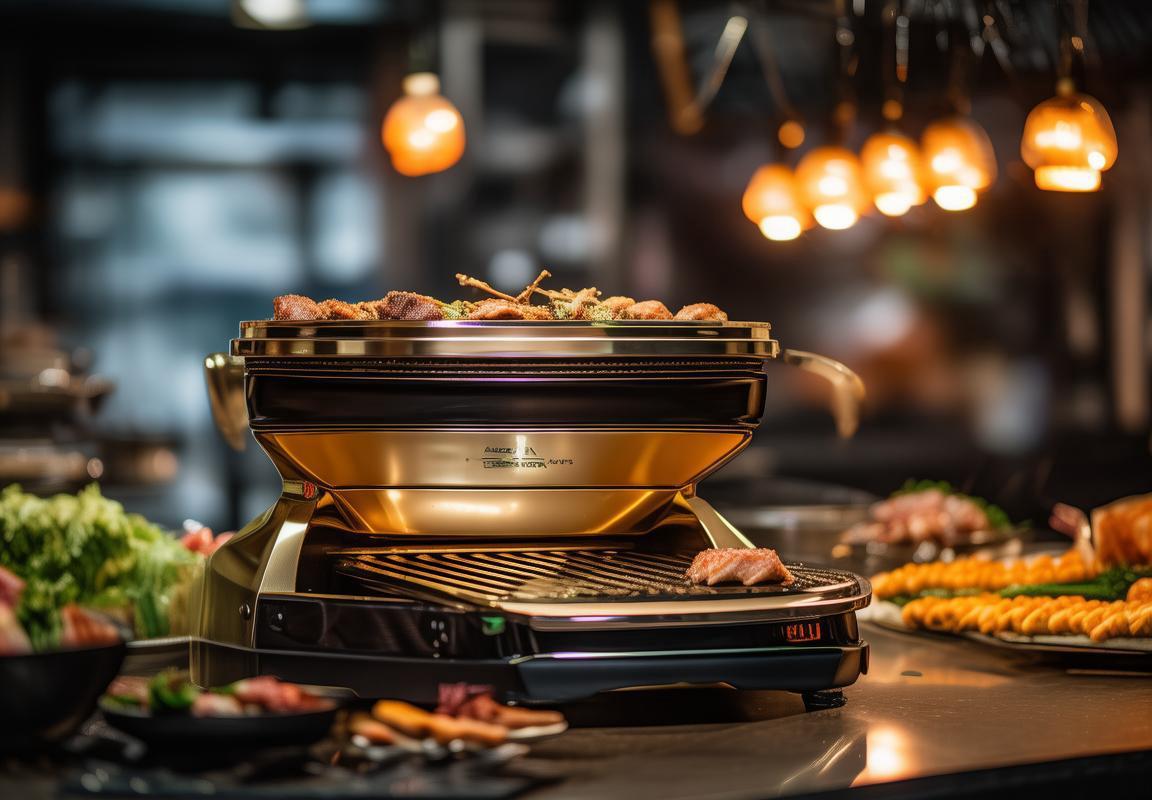
The Design Process with ODM
Understanding the intricate dance of creativity and functionality in the design process with Original Design Manufacturers (ODMs) can be a revelation for those looking to innovate and stand out in the competitive world of contact grills. Here’s a glimpse into the stages and subtleties of this collaborative journey:
-
Initial Consultation and VisioningThe process often begins with a consultation, where ideas and visions are exchanged. The client shares their aspirations for the contact grill, and the ODM team listens intently to understand the desired outcome.
-
Research and Market AnalysisBefore diving into the design, thorough research is conducted. This includes analyzing current market trends, studying competitor products, and identifying gaps that the new design can fill. The ODM team ensures that the product will not only meet the client’s needs but also resonate with the target audience.
-
Conceptualization and SketchingThe brainstorming phase produces a variety of concepts. These are then sketched out by designers, translating the initial ideas into visual forms. The sketches often include different design elements, materials, and features that could be incorporated into the final product.
-
Prototyping and TestingWith a set of sketches in hand, the ODM team moves on to create a prototype. This is a physical representation of the design that allows for testing in real-world conditions. The prototype is scrutinized for durability, functionality, and aesthetics, with multiple iterations possible to refine the design.
-
Material SelectionChoosing the right materials is crucial for both the performance and the lifespan of the contact grill. The ODM team evaluates various materials based on factors like heat resistance, safety, ease of cleaning, and sustainability. The decision-making process involves balancing cost, quality, and environmental impact.
-
Integration of Features and TechnologiesAs the design progresses, the ODM team integrates the latest features and technologies that enhance the contact grill’s performance. This might include smart controls, advanced heat distribution systems, or innovative cooking surfaces. Each feature is carefully considered to ensure it aligns with the overall design and user experience.
-
Industrial Design and User ExperienceThe industrial design phase focuses on the grill’s form and how it interacts with the user. The ODM team ensures that the contact grill is not only attractive but also ergonomic and user-friendly. They consider factors like grip, weight, and how the grill fits into the user’s kitchen environment.
-
Iterative Feedback and RefinementThroughout the design process, there’s constant feedback between the ODM team and the client. The initial prototype is presented, and the client’s input is invaluable for making adjustments. This iterative process can involve tweaking the design, altering features, or even rethinking the overall concept.
-
Compliance and CertificationAs the design nears completion, the ODM team ensures that the contact grill complies with all relevant safety standards and regulations. This includes certifications for electrical safety, material health, and environmental sustainability. The process is thorough to guarantee the grill will meet the highest quality and safety standards.
-
Final Production and Quality AssuranceOnce the design is finalized and all certifications are in place, the ODM team moves into production. This involves creating a mold for the grill, sourcing materials, and assembling the product. Throughout production, rigorous quality control checks are performed to ensure each grill meets the agreed-upon specifications.
-
Packaging and Marketing SupportThe design process doesn’t end with the creation of the contact grill. The ODM team often offers additional support, such as designing packaging that not only protects the product but also communicates its features and benefits to potential buyers. Marketing materials and strategies are also developed to help the product stand out in the market.
-
After-Sales Support and Continuous ImprovementEven after the contact grill hits the shelves, the relationship between the client and the ODM doesn’t diminish. Feedback from customers is gathered, and any necessary improvements are made. This approach ensures that the product remains competitive and meets the evolving needs of consumers.
This design process with an ODM is a meticulous and collaborative endeavor that combines technical expertise with artistic flair. It’s through this partnership that contact grills can be transformed from a mere concept into a reality that not only meets but exceeds expectations.

Customization and Flexibility
In the world of product development, the ability to customize and offer flexibility is a game-changer. Whether you’re a manufacturer looking to cater to a diverse market or a consumer seeking a unique solution, the combination of customization and flexibility can open up a world of possibilities. Let’s delve into how these two aspects can transform the design and production process.
Imagine you’re a small business owner with a vision for a unique kitchen appliance. You’ve heard of Original Design Manufacturer (ODM) services and are excited about the idea of creating something that stands out. Customization is the first step. It allows you to infuse your brand’s identity into every aspect of the product. This could mean anything from choosing a specific color scheme that resonates with your target audience to selecting materials that reflect the values of sustainability and eco-friendliness.
Flexibility comes into play when you need to adapt your design to various market demands. For instance, a contact grill might be initially designed for domestic use, but through ODM, you could easily modify it to cater to commercial kitchens or outdoor events. The ability to tweak the size, power, and features of the grill ensures that it remains relevant and appealing across different applications.
One of the key benefits of working with an ODM is the level of control you have over the design process. You can specify every detail, from the type of heating elements to the placement of control panels. This level of customization ensures that the final product not only meets your standards but also those of your customers. For example, you might opt for a non-stick surface that’s easy to clean, or a temperature control system that provides precise cooking temperatures.
When it comes to flexibility, the possibilities are endless. ODM partners often have a range of standard components and materials that can be mixed and matched to create unique products. This means that even if you have a specific vision for your contact grill, the ODM team can suggest alternatives that can help you achieve your goals while also considering cost-effectiveness and production efficiency.
Consider the design of the grill’s lid, for instance. While a traditional hinge might suffice for a home setting, an ODM could propose a sliding or telescoping lid for a commercial grill, which would be more durable and easier to use in a busy kitchen environment. The same goes for the cooking surface. You might want a flat grilling area, but an ODM could suggest a textured surface to enhance the sear marks and add visual appeal.
Another area where customization and flexibility are crucial is in the interface design. The controls of a contact grill can be as simple or as complex as needed. An ODM might offer a range of control panels, from basic dials to sophisticated touchscreens, allowing you to choose the one that best suits your customers’ needs and your brand’s aesthetic.
In terms of materials, the choice is vast. An ODM can source high-quality stainless steel for a sleek, professional look, or a more affordable yet durable material like aluminum for a more budget-friendly option. The choice of materials not only affects the product’s appearance but also its performance and longevity.
The design process with an ODM is also about understanding the end-user. An ODM partner will likely conduct market research to gather insights into consumer preferences and usage patterns. This information is invaluable when it comes to creating a product that not only looks good but also performs well and is user-friendly.
Moreover, customization and flexibility extend beyond the physical product. Consider the packaging. An ODM can help design packaging that not only protects the product during shipping but also communicates its features and benefits effectively to the consumer. This can include everything from the use of eco-friendly materials to the inclusion of instructional videos or recipe cards.
In the realm of customization and flexibility, the sky is the limit. An ODM can assist in creating modular designs, where components can be easily replaced or upgraded, ensuring that the product remains relevant even as technology and consumer needs evolve. This kind of foresight can be a significant competitive advantage in a market that’s constantly changing.
When you choose to work with an ODM, you’re not just hiring a manufacturer; you’re engaging a partner who can help you bring your vision to life. They can offer suggestions, provide solutions to challenges, and ensure that your product is not only unique but also adaptable to the ever-changing landscape of consumer demand. The design process with an ODM is a collaborative journey that results in a product that not only meets your expectations but also exceeds them, offering a tailored experience that resonates with your customers.

Quality Control and Assurance
Navigating the intricacies of quality control and assurance in the manufacturing process is a meticulous endeavor that can make or break a product’s reputation. In the world of contact grill ODM (Original Design Manufacturer), maintaining high standards is crucial for both the manufacturer and the end consumer. Here’s a deeper look into the ins and outs of this critical aspect.
In the realm of contact grill ODM, the design process is just the beginning. Once the conceptualization and prototyping phases are complete, the focus shifts to ensuring that the final product meets the stringent quality criteria set by both the manufacturer and regulatory bodies. This is where quality control and assurance come into play.
One of the key components of quality control is the meticulous inspection of materials. High-quality components are the foundation of a reliable contact grill. This means that every piece, from the heating elements to the handles, must be sourced from reputable suppliers who adhere to the highest standards of material quality. Any inconsistencies or defects in the raw materials can lead to issues in the finished product, so thorough vetting of suppliers is essential.
Throughout the manufacturing process, there are various checkpoints where quality is assessed. Skilled inspectors use a variety of tools and techniques to examine the contact grill for any defects. This includes visual inspections, where they look for cracks, dents, or other visible signs of damage. They also employ precise measuring devices to ensure that all parts are within the required tolerances.
Beyond physical inspections, functional testing is equally important. Contact grills are designed to cook food, so they must be tested to ensure they perform as intended. This involves checking the evenness of heat distribution, the temperature accuracy, and the durability of the cooking surface. Any inconsistencies in these areas can lead to an unsatisfactory cooking experience for the user.
One of the challenges in quality control is the identification of defects that may not be immediately apparent. To address this, manufacturers often use statistical process control (SPC) techniques. By analyzing data collected during the manufacturing process, engineers can identify trends and patterns that may indicate a potential issue before it becomes widespread.
Assurance comes into play when the product is ready for shipment. Here, the focus shifts from identifying defects to preventing them. This is where the concept of root cause analysis (RCA) becomes crucial. By investigating the underlying causes of any defects that do occur, manufacturers can implement corrective actions to prevent them from happening again in the future.
In the world of contact grill ODM, quality control and assurance also involve continuous improvement. Manufacturers often gather feedback from customers and use it to make iterative changes to their products. This customer-centric approach ensures that the contact grill not only meets current standards but also evolves to meet the changing needs of consumers.
Certifications play a significant role in quality control and assurance. Many countries have specific standards for consumer products, and manufacturers must comply with these to export their goods. Obtaining certifications like ISO 9001, which is an international standard for quality management systems, is a testament to a manufacturer’s commitment to quality.
Training is another vital aspect of maintaining quality. Employees at all levels of the manufacturing process must be well-trained to understand the importance of quality control and how to carry out their tasks effectively. This includes not only the technical aspects of the job but also the broader principles of quality management.
In the competitive landscape of contact grill ODM, the ability to provide a consistent, high-quality product is a major competitive advantage. This is achieved through a combination of rigorous quality control measures, continuous improvement initiatives, and a culture of excellence that permeates the entire organization.
The journey from raw materials to a finished contact grill is a complex one, filled with potential pitfalls. However, by focusing on quality control and assurance, manufacturers can navigate these challenges and deliver a product that not only meets but exceeds expectations. This commitment to excellence is what sets apart the leaders in the contact grill ODM industry.

The Future of Contact Grills with ODM
The world of contact grills is evolving, and with Original Design Manufacturer (ODM) partnerships, the future looks promising. Innovations in technology, enhanced user experiences, and sustainable practices are shaping the next generation of contact grills. Let’s delve into these aspects:
Grill Technology IntegrationAs ODMs continue to push the boundaries of design, we can expect a seamless integration of modern technology into contact grills. Smart features like temperature control, cooking time monitoring, and even wireless connectivity may become standard, making the cooking process more intuitive and efficient.
Eco-Friendly MaterialsWith environmental concerns at the forefront, ODMs are focusing on sustainable materials. Recycled metals, bio-plastics, and energy-efficient designs are becoming more common. This shift not only reduces the carbon footprint but also aligns with the values of eco-conscious consumers.
User-Centric InnovationsThe future of contact grills will likely be driven by user-centric innovations. ODMs are already experimenting with features like adjustable heat settings, non-stick surfaces, and removable components for easy cleaning. These enhancements aim to simplify the cooking process and cater to diverse culinary preferences.
Safety and HealthHealth-conscious consumers are a driving force behind the evolution of contact grills. ODMs are exploring new ways to ensure that cooking with these grills is safe and hygienic. This includes the development of non-toxic coatings, anti-bacterial surfaces, and easy-to-clean designs that reduce the risk of cross-contamination.
Versatility in DesignContact grills are not just for cooking meats anymore. ODMs are looking to expand the versatility of these appliances by incorporating features that allow for different cooking methods, such as grilling, searing, and even baking. This will open up new possibilities for home cooks who want to diversify their culinary skills.
Customization for Market SegmentsThe future of contact grills will see a surge in customization, tailored to specific market segments. Whether it’s for commercial kitchens, outdoor enthusiasts, or urban apartment dwellers, ODMs are developing products that meet the unique needs of different consumer groups.
Global Trends and Local PreferencesODMs are adept at identifying global trends and incorporating them into their designs. However, they also recognize the importance of local preferences and cultural nuances. This dual approach ensures that contact grills are not only cutting-edge but also resonate with diverse consumer bases worldwide.
Collaboration with Chefs and FoodiesODMs are increasingly collaborating with chefs and food enthusiasts to create innovative contact grill designs. This partnership helps in understanding the latest cooking techniques and preferences, ensuring that the grills are not only functional but also inspiring for culinary adventurers.
Rapid Prototyping and IterationWith advancements in 3D printing and rapid prototyping, ODMs can iterate on designs quickly. This allows for testing and refining new features before they reach the market, ensuring that contact grills are ready to meet the demands of the ever-changing cooking landscape.
Market Expansion into Emerging RegionsAs the demand for contact grills grows, ODMs are looking to expand into emerging markets. By adapting designs to fit local power supplies, cooking habits, and cultural norms, these manufacturers are paving the way for contact grills to become a staple in kitchens around the world.
Sustainability and LongevityA key focus for ODMs is sustainability. This means designing grills that are not only eco-friendly but also built to last. By using durable materials and incorporating smart features that prevent damage, contact grills of the future will be designed with longevity in mind.
Smart Cooking and Recipe IntegrationThe next step in the evolution of contact grills could be the integration of smart cooking capabilities, including recipe guidance and automated cooking modes. ODMs are exploring how to make these grills more than just cooking appliances—they could become culinary coaches.
By staying ahead of these trends and embracing innovation, ODMs are shaping the future of contact grills. As the industry continues to grow, we can look forward to a wide range of high-quality, versatile, and user-friendly contact grills that cater to the needs of both casual cooks and culinary experts.
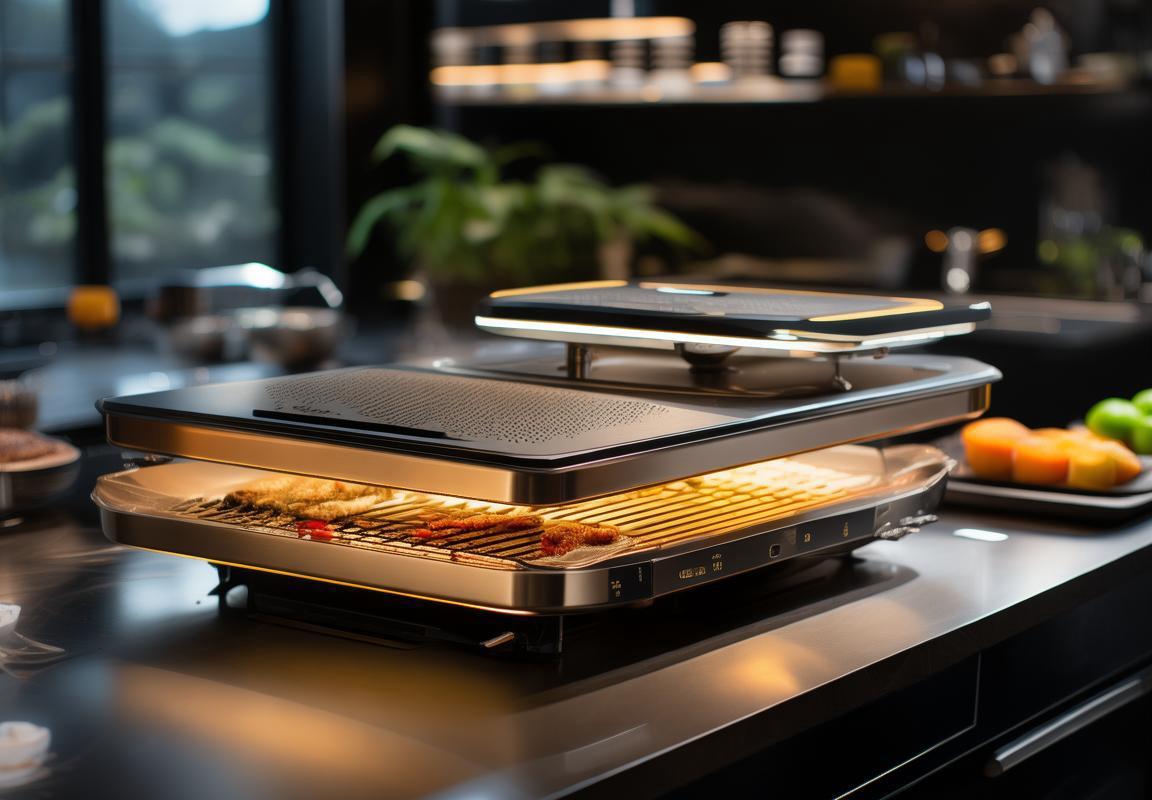
Success Stories
In the world of product development, there are countless stories of success that showcase the power of innovation, teamwork, and a shared vision. Here are a few tales that highlight the journey from concept to market success, focusing on various industries and the role of original design manufacturing (ODM) in each.
-
The Smartwatch RevolutionThe rise of smartwatches has been nothing short of a technological revolution. One such brand, which started with a simple idea of integrating health and fitness tracking into a sleek wristband, turned to an ODM partner to bring their vision to life. The ODM team worked closely with the brand to refine the design, ensuring the device was not only functional but also aesthetically pleasing. The result was a best-selling smartwatch that not only tracked steps and heart rate but also synced with smartphones, making it an essential gadget for the health-conscious consumer.
-
The Eco-Friendly Packaging BreakthroughA small startup with a mission to reduce plastic waste in packaging turned to an ODM to develop a revolutionary, biodegradable material. The ODM team was instrumental in the development process, creating prototypes and testing the durability of the material under various conditions. The final product, a fully compostable packaging solution, caught the attention of large corporations looking to green their supply chains. The partnership between the startup and the ODM led to a successful launch and a significant reduction in single-use plastics.
-
The Fashionable Fashion BrandIn the fashion industry, staying ahead of trends is crucial. A mid-sized fashion brand sought the help of an ODM to design and produce a line of sustainable clothing. The ODM team was tasked with finding materials that were both environmentally friendly and stylish. They sourced sustainable fabrics and designed timeless, yet modern, garments. The brand’s new line received glowing reviews and became a hit among eco-conscious consumers, boosting the brand’s reputation and sales.
-
The Home Appliance InnovatorA home appliance manufacturer knew there was a gap in the market for a smart, energy-efficient oven. They partnered with an ODM to develop a prototype that would combine the latest technology with user-friendly features. The ODM team meticulously designed and tested the oven, ensuring it was both intuitive and powerful. The final product, a smart oven that could be controlled via an app, became a game-changer in the industry, earning the company numerous awards and expanding its market share.
-
The Gaming Industry’s Hidden HeroThe gaming industry is known for its cutting-edge technology, but behind every high-tech console is a team of ODM experts. One such team was brought in to develop a new console that promised to revolutionize the gaming experience. They worked tirelessly to design a sleek, powerful machine that could handle the demands of modern gaming. The result was a console that offered an unparalleled gaming experience, becoming a bestseller and solidifying the ODM’s reputation as a leader in the industry.
-
The Beauty of CollaborationA beauty brand with a unique skincare line wanted to expand its product range with a line of makeup. They turned to an ODM that had a track record of producing high-quality beauty products. The ODM team was responsible for formulating the makeup products, packaging design, and ensuring they were cruelty-free and eco-friendly. The collaboration between the brand and the ODM led to a successful launch that resonated with customers who appreciated the brand’s commitment to ethical beauty.
-
The Medical Device BreakthroughA small medical device company had developed a novel device to help patients with mobility issues. They partnered with an ODM that specialized in medical device manufacturing. The ODM team was crucial in the design process, ensuring the device was not only effective but also safe for use. The final product, after rigorous testing and quality control, received approval from regulatory bodies and has since improved the lives of countless patients.
-
The Tech Startup’s JourneyA tech startup with a vision to disrupt the energy market sought the expertise of an ODM to bring their energy-saving device to life. The ODM team faced the challenge of creating a device that was both efficient and affordable. Through numerous iterations and a focus on cost-effective production, they developed a product that the startup could offer at a competitive price. The device gained traction quickly, propelling the startup into the mainstream market.
These success stories highlight the pivotal role that ODMs play in transforming ideas into market-ready products. Each partnership demonstrates the value of combining specialized design and manufacturing skills with a shared vision for innovation and quality.
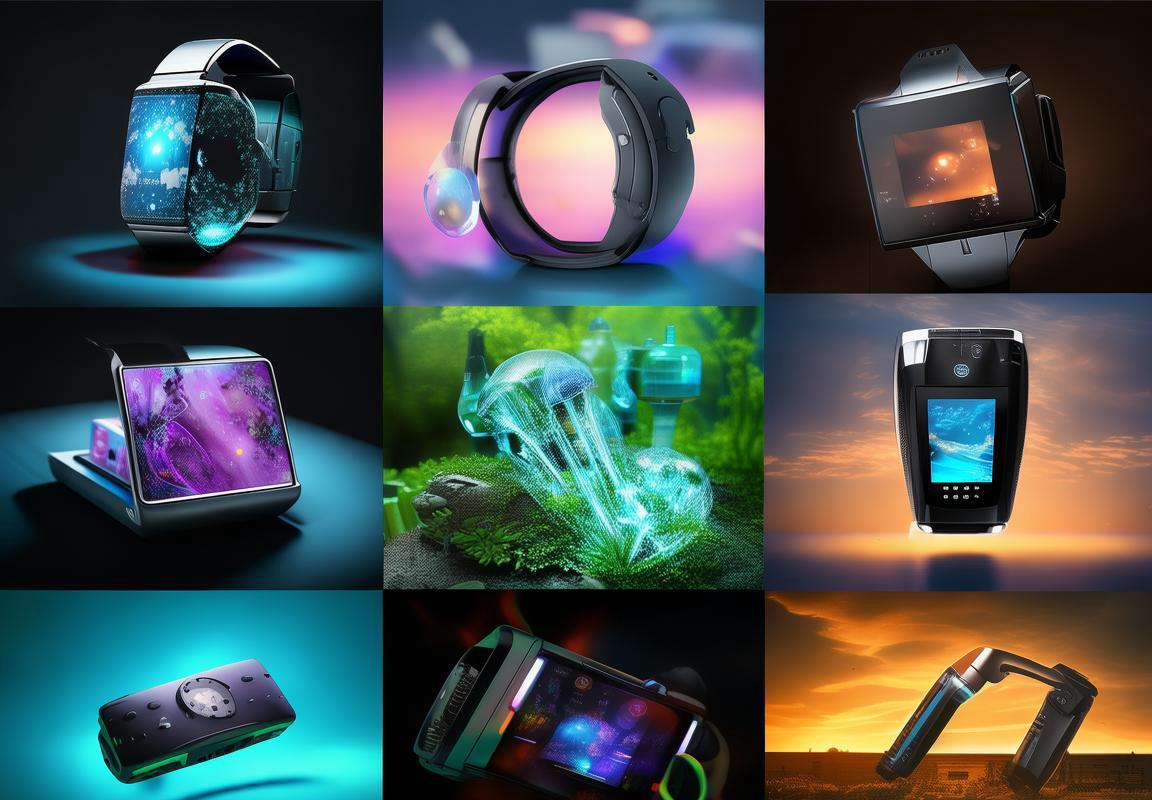
Conclusion
In reflecting on the journey we’ve taken through the world of contact grill ODM, it’s clear that the path to success is paved with innovation, collaboration, and a commitment to quality. As we wrap up this exploration, it’s important to consider the impact these experiences have had and the lessons learned along the way.
The collaboration between brands and ODM partners has shown just how powerful a synergy can be. By combining the creative vision of a brand with the technical expertise of an ODM, we’ve seen products that not only meet but exceed consumer expectations. This fusion of ideas and capabilities has led to contact grills that are not just functional but also a delight to use, with features and designs that resonate with customers.
One key takeaway is the importance of flexibility in the design process. The ability to customize and adapt to specific needs has allowed for a wide range of contact grill options, each tailored to different market segments and consumer preferences. This adaptability is crucial in a competitive landscape where staying ahead means being able to respond quickly to changing trends and demands.
Quality control and assurance have been at the forefront of our discussions, and it’s evident that they are non-negotiable aspects of any successful ODM venture. The rigorous standards and attention to detail that ODM partners bring to the table ensure that every contact grill that leaves the factory is a testament to excellence. This focus on quality not only satisfies customers but also builds trust and loyalty over time.
Looking forward, the future of contact grills with ODM is bright. The integration of new technologies, such as smart features and sustainable materials, promises to revolutionize the way we cook. ODM partners are at the forefront of these innovations, constantly pushing the boundaries of what’s possible in the contact grill market.
Success stories from brands that have partnered with ODMs are numerous and varied. From a small startup that found a niche market for eco-friendly grills to a global brand that expanded its product line with cutting-edge designs, these stories underscore the transformative power of ODM collaboration. Each one demonstrates how a partnership can lead to growth, increased market share, and a stronger position in the industry.
As we reflect on these experiences, it’s inspiring to see the journey from concept to consumer. The journey is not without its challenges, but the rewards are substantial. The ability to bring a product from idea to reality, ensuring it meets the highest standards of quality and design, is a testament to the strength of the ODM model.
In conclusion, the world of contact grill ODM is a dynamic and ever-evolving landscape. It’s a place where creativity meets precision, and where the pursuit of excellence is the driving force behind every new innovation. As we continue to see the fruits of these collaborations, it’s evident that the future of contact grills is bright, and the role of ODM in shaping that future is more significant than ever.